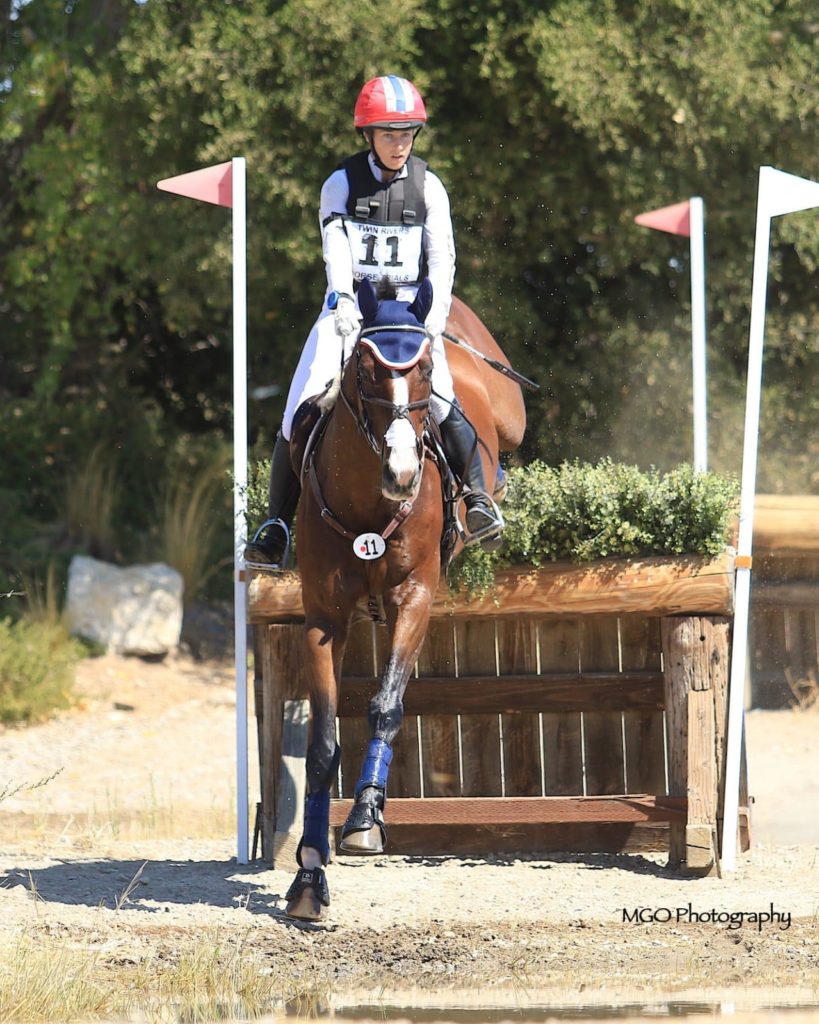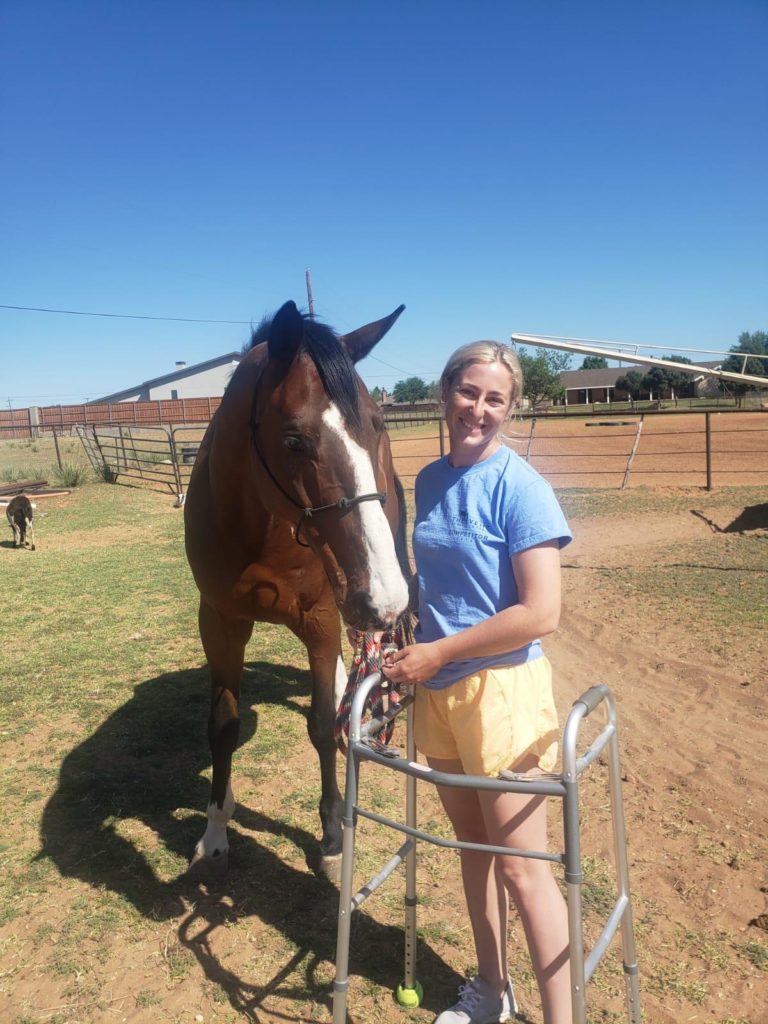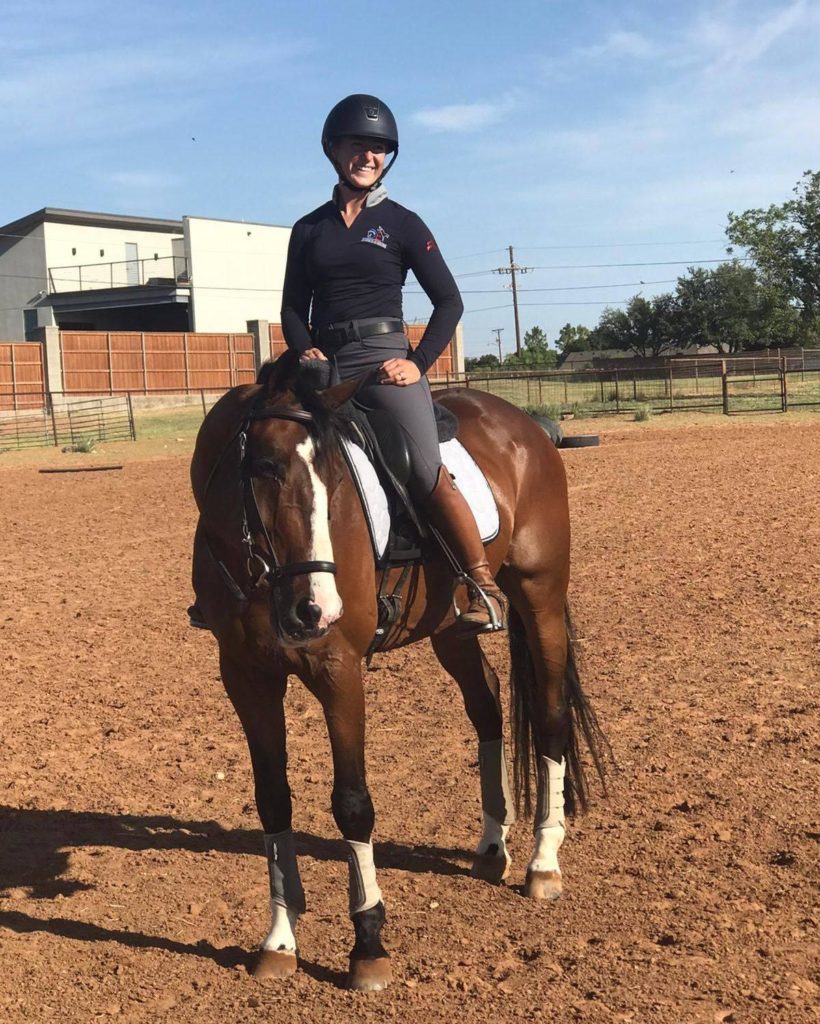In this piece, professional event rider Megan Sykes shares her story about getting in a riding accident and her road to recovery. When she took a bad fall early this spring, she gained a new perspective on training, being an athlete, and mental health. This story originally appeared on our sister site, Horse Nation.
As horsemen and women, we all know the physical demands of riding. However, it is common for equestrians to get overlooked as athletes. Though it is truly a team effort, many people believe the horse is the only athlete. It is important to remember that the horse can only perform as well as the rider. If you expect your horse to perform at his or her best, then you as the rider must give the same effort to compete at the top levels. To accomplish this, riders should approach this sport with the same mentality as athletes in sports like football or basketball.
 Photo by Marcus Greene Outdoor Photography.
Photo by Marcus Greene Outdoor Photography.
When horses get injured, recovery is taken very seriously, and significant money and time are spent rehabbing them to their former glory. Riding is inherently dangerous, so rider injuries are very common in this sport, especially in eventing. When the rider is injured, their injury needs to be taken just as seriously as when a horse is injured. Riders can only continue riding and competing to the best of their ability if they are healthy and fit. The “athlete mentality” has tremendous focus on injuries and their recovery speed and healing. Like me, you may have experienced an injury that kept you from riding. My hope in sharing my experience is that those going through something similar may know that they are not alone in the struggles they face and find advice on how to handle their setbacks in a positive way.
Injury and Perspective on Recovery
I recently got into a riding accident while training at home. Although I am healing nicely now, the severity of the accident and potential for even more substantial injury was both eye opening and downright scary. I was flat schooling a horse when he suddenly got anxious, took off and ended up falling on top of me. My pelvis and shoulder were fractured in the accident and I was unable to continue riding. I was given the expectation of three months of recovery.
 Photo courtesy Megan Sykes.
Photo courtesy Megan Sykes.
Like many other athletes, my first thought was, “How is this going to affect my competition plans, my team members, and my horses?” My career flashed before my eyes. On the way to the hospital, I was really worried that my riding career may be over. Even after I was given my prognosis and recovery expectation, I had many concerns. What would I do with my horses while I couldn’t train? How was I going to keep my supporters and my newfound business partners happy while I couldn’t do anything? I went through several different emotional stages while processing my injury including grief and sadness, wondering what I could have done to prevent the accident. I also grieved all the training time I was going to lose. Eventing is such a fast-paced sport. You are expected to be really good, really young. There are so many up-and-coming riders kicking butt in competition. If you don’t keep up, you’re going to miss the opportunity to be one of the ones on top.
Unlike our horses, when riders get injured, we are very aware of the precious time we are losing. We have an internal clock that pushes us and makes us feel that everyday counts, and every day missed is a day someone else is getting better. When I was first injured, I was looking at many days of not being able to climb in the saddle and I had to conquer that internal clock. I chose to be strategic with this time out of the saddle, putting in the effort to keep the horses and myself on the path of achieving my future goals. I’ve been making the time pass by working on improving areas outside of riding.
These are the 6 areas I’ve been focusing on:
1. Finding holes in my horses’ training and finding exercises to fix them.
For example, I have a new horse, Tennessee Whiskey, who recently arrived from Germany. She’s pretty timid, so we’ve been working on the basics and groundwork with her. It’s been a great time to ensure that she has a solid foundation which will make her an even greater partner when I can ride again.
2. Improving and building my business
Building my business is an important part of reaching my future goals. In the midst of competition and training, it can be easy to put the business on the back burner. This time out of the saddle has given me the headspace and time to create a business we can be proud of. We have focused on building a strong foundation with social media, addition of sale horse evaluations and opportunities and strengthening our sponsor relationships.
3. Developing deeper relationships with my horses.
When you’re always gearing up for the next competition, there’s not often time to take a step back and focus on the relationships you have with your horses. I have been using this time to keep my horses as fit as possible while also doing more fun activities. My horse, Mo has been swimming a lot these past couple of months! These developed bonds both increase the trust between you and your horses and can give you a competitive edge when the tough questions present themselves in all three rings of the sport.
4. Recognizing how lucky I am to have healthy horses and a great support system.
My support system is second to none and it has been important for me to recognize and thank them for that. My husband is also in the horse industry and he has taken great care of my horses when I haven’t been able to. My mom came and spent three weeks with us right after the injury. She nursed me back to health while my husband was working. Brian and Kailynn, my business partners in Classics Eventing, are amazing. They have had my back through all of this. When I was worried about disappointing everyone, they told me to take my time and get healthy. I am also very fortunate to have healthy horses that are ready to get back at it as soon as I’m able. Their complete devotion and willingness to compete as hard as they can for me is, and will always be, the foundation of any accomplishments I achieve.
5. Building my mental toughness.
As riders, we are used to working our bodies harder and harder until our position, timing and feel is the best it can be. Not being able to improve makes you reevaluate your mental toughness. A focused, calm mindset is really important when riding, but especially in competition. When you have the time off to think about everything that can go wrong, it’s easy to get carried away with your insecurities. Taking the time to assess those insecurities can make you a stronger competitor. I have used this time to build my mental toughness so I can carry it into competitions and be able to focus even in times of stress and disappointment. From the U25 team to my business partners, I have learned that mental strength comes in all aspects of this sport and business. Big name athletes that we see on TV and CEOs of major companies seek professionals to help keep them on top of their mental game. This enables them to take on challenges and execute the right moves, like taking the three-point shot at the buzzer or making the right decision in the Fortune 500 board room. This is no different in our sport or equine businesses. Having the mindset to shake off knocking down a rail and riding onto the next jump is an art form and a mental game I strive to excel at.
6. Focusing on my rehab program.
After an injury, creating a plan for recovery is very important and, unlike injuries to a horse, is often shortchanged in regard to the rider. I was in a wheelchair and wasn’t able to walk the first week after my injury. I couldn’t go to the barn at all. I was concerned that I might be in that same amount of pain the whole recovery time, and that was pretty frightening. I started physical therapy a week and a half after my accident with two-hour sessions, three times a week. The process was very similar to a horse’s recovery program. I took time off, iced for inflammation, and slowly gained strength and mobility through low impact exercises. Then, I gradually built endurance and strength until I felt normal again. I made sure to listen to my body throughout the process. There were some setbacks and off days, and days where I felt sore from pushing myself, but the past two weeks have been the hardest for me. My body has felt totally healthy, but I’ve had to hold back because I’m not completely healed. I’m still very restricted in what I’m allowed to do, so it’s taken some self-discipline to not overdo it. I have also been doing extra therapies like chiropractic work, massage, and STEM treatments to help with the healing process. I’ve been treating my body like I would my horse, fueling it with only the best food, giving it plenty of rest, and taking baby steps toward recovery.
Horses are Only as Strong as Their Rider
Without approaching my recovery like a traditional athlete, my recovery in this time frame would not be possible. My original rehab time was three months. I’m now at two months and am hoping to get the all clear at my appointment next week!
 Update: She did get the all clear! Megan’s first ride back after an “all clear” from the doctor. Photo courtesy Megan Sykes.
Update: She did get the all clear! Megan’s first ride back after an “all clear” from the doctor. Photo courtesy Megan Sykes.
Our horses are only as strong as their rider. Because of the nature of equestrian sports, especially in eventing, injuries are a huge component for both horse and rider. As riders, we must treat our bodies as well as we treat our horses. If we don’t, we can’t possibly perform at our peak abilities and can’t be the partner our horses need.
When injuries happen, they can be scary and stressful. Loss of time and progress are a very real fear for competitive riders. If my experience has taught me anything, it’s that focusing on what you can do and finding mental strength is incredibly important during the healing process. Know that you’re not alone in the obstacles you face and allow yourself to rely on your support system to help you come out of your injury even stronger than you were before.
About Megan
Megan Sykes owns and operates Classics Eventing in Midland, Texas. She started riding and competing at the young age of six and joined Next Level Eventing as a groom and working student for 4* Event Rider, Heather Morris. Megan continues to ride under the instruction of both Heather and Tamie Smith today. Megan’s mission as a trainer is to teach students about riding skills and horsemanship needed in the sport, as well as facilitating and guiding each student through the levels of eventing. To learn more about Classics Eventing, click here.
